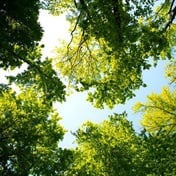Amid the highest recorded pollen counts in history, Health24 will be bringing you exclusive pollen count updates courtesy of the UCT Lung Institute's Allergy and Immunology Unit.
Here are the major city updates for 16 July:
Cape Town (Western Cape)
Due to technical difficulties with the spore trap, the findings for this week are based on the findings of the previous week and 10 years’ archived data. Tree pollen detected at this time of the year includes low levels of cypress, gum, pine and oak. Grass pollen is very low and weeds are also low and include Erica, the daisy family, nettle and rush.
Count: 3 (low)
Johannesburg (Gauteng)
Grasses were low on average but increased to moderate levels towards the end of the week. Trees were low and included the types: Cypress, gum, pine and Rhus/Searsia. Weed levels were low and included ferns, the daisy family and goosefoot. Moulds were low.
Count: 11 (moderate)
Pretoria (Gauteng)
Grasses were low, trees were also low and only cypress was detected. Weeds similarly low and included sorrel and Stoebe (slangbos). Moulds were very low.
Count: 2 (very low)
Bloemfontein (Orange Free State)
Grasses were low at this sampling site as were trees. Only Rhus/Searsia and cypress were detected. Stoebe (slangbos) was the only weed found. Mould levels were very low.
Count: 3 (low)
Kimberley (Northern Cape)
Low scores for weeds were seen during this dry period with strong wind. Tree loads were low and just one grain of Rhus/Searsia pollen was detected. Weed pollen was low with only Artemisia (mugwort or sagebrush) detected. Moulds were very low.
Count: 1 (very low)
Durban (KZN)
Grasses were low, trees were low and included Casuarina and Saxifrage. Low weed levels included the daisy family, goosefoot, nettle, Stoebe (slangbos) and ferns. Moulds were low.
Count: 2 (very low)
Port Elizabeth (Eastern Cape)
Grasses were low. Trees were low and included the types: pine, gum Anacardiaceae (the sumac and cashew family, also mango) and waxberry. Low weeds were identified as the daisy family, Stoebe (slangbos) sedge and protea. Moulds were low.
Count: 3 (low)
See the full report HERE.
Reference ranges:
Overall, Trees, Grasses and Weeds all use the same values (grains per cubic metres of air).
Overall count is the daily average of pollen grains per cubic metres of air (trees plus grasses plus weeds).
In partnership with the UCT Lung Institute's Allergy and Immunology Unit.
As the pollen problem worsens, precise and expanded monitoring becomes even more essential. And here's how you can help.
* Please note weekly pollen counts will be disrupted during the national lockdown and will intermittently be made available. We apologise for the inconvenience.
READ | Asthma, allergies, Covid-19 and your child: here’s what you need to know
WATCH | Can being 'too clean' cause allergies?
WATCH | Behind the scenes: How spore traps in SA are used to determine the pollen count
Image: Getty




 Publications
Publications
 Partners
Partners















